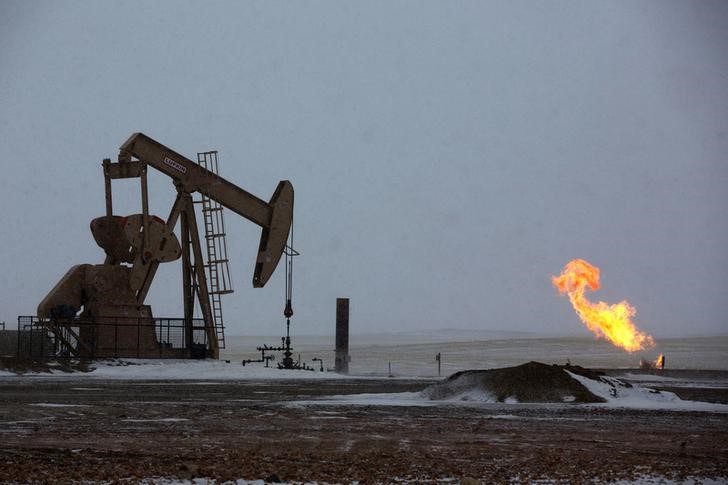By Peter Nurse
Investing.com -- Oil prices edged higher Thursday, continuing the positive tone from the previous session on the back of a large drawdown of U.S. crude stockpiles as well as optimism that the damage from the Omicron Covid variant may be limited.
By 8:45 AM ET (1345 GMT), U.S. crude futures traded 0.5% higher at $73.14 a barrel, after gaining 2.3% on Wednesday, and the Brent contract rose 0.4% to $75.60, adding to the previous session’s 1.8% gain.
U.S. Gasoline RBOB Futures were up 0.9% at $2.1835 a gallon, supported by the prospect of disruptions from a major fire at Exxon Mobil (NYSE:XOM)'s refinery in Baytown, Tx.
A couple of studies from the U.K., one from the University of Edinburgh and the other from the Imperial College London, released Wednesday, suggested the number of patients needing hospitalization with Omicron was sharply lower relative to Delta. These backed up earlier data from South Africa, where the new variant was first discovered.
Coupled with AstraZeneca (NASDAQ:AZN) and Novavax (NASDAQ:NVAX) making encouraging noises about the capability of their vaccines to cope with the Omicron variant, risk sentiment is on the rise.
Crude prices had already received a boost Wednesday after the Energy Information Administration reported crude inventories declined a substantial 4.72 million barrels last week, the fourth consecutive weekly draw. This suggested that whatever Omicron was doing, demand from the largest consumer of crude in the world is not slowing.
Additionally, rising U.S. consumer confidence, strong durable goods orders and jobless claims trending near historic lows suggest the U.S. economy, the world’s main driver, is growing in a healthy manner, countering any worries about Omicron.
“From here, we are probably going to need some more Omicron headlines along the lines of hospitalizations and deaths soaring with total cases to turn the markets from their perpetual, central bank QE-induced perpetual buy-the-dip in everything course,” said analyst Jeffrey Halley at MarketPulse.
Crude consumption is expected to reach 99.53 million barrels per day in 2022, up from 96.2 million b/d this year, according to the International Energy Agency, only marginally below 2019's daily consumption of 99.55 million barrels.
This will put the focus squarely on the major producers, and the Organisation of Petroleum Exporting Countries in particular, to meet this demand, at a time when they have had difficulty in producing at the agreed reduced levels.
“Only Vladimir Putin deciding to holiday over the Ukrainian border changes that narrative,” added Halley.
